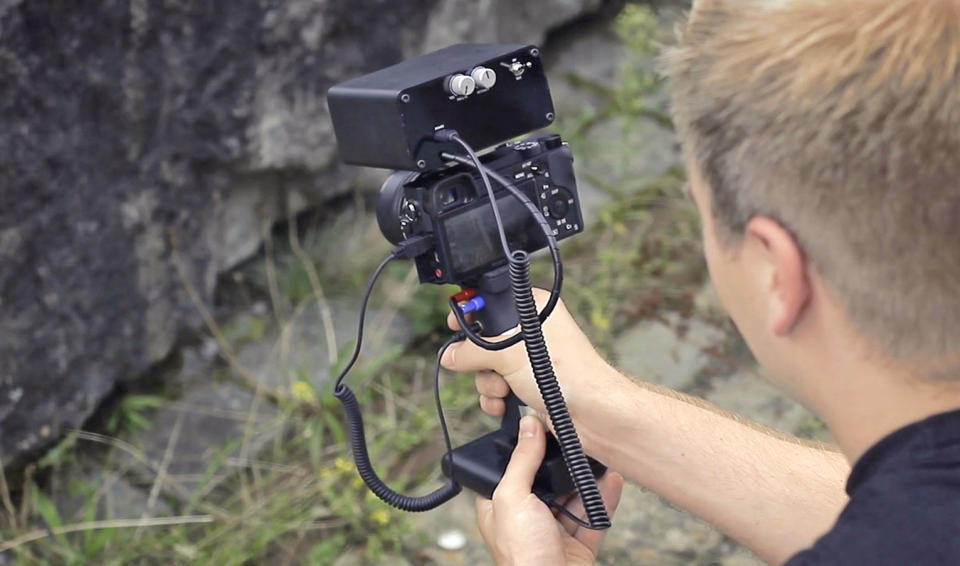A machine literally shocks you into taking 'good' photos
An artist tells Engadget how his device, like Instagram, can turn us into Pavlov's dog.
Machines are getting excellent at recognizing images, and they're even pretty good at rating them. So, why do you even need humans to take the photos in the first place? Designer and artist Peter Buczkowski took that question in a dark, amusing direction with a project called Prosthetic Photographer. He created an AI device that can recognize a well-composed scene and then force the photographer to press the shutter via a mild electrical shock to their hand.
Engadget chatted with Buczkowski to find out what inspired a project that's macabre, but speaks to excessive Instagramming, AI and other controverisal areas of tech. First off, it's a real, fully functional device that can attach to any mirrorless or DSLR camera. Its AI was trained on the much-used CUHKPQ data set, which contains 17,000 internet photos rated by humans. The box has a built-in camera that can detect when you've composed a scene to its standards, then fire a jolt of electricity into your hand, forcing your trigger finger to move and take the photo.
"My initial idea was to use electric shocks." said Buczkowski. "I really liked the idea that the human becomes the interface in this scenario, because it's possible to control muscles and nerves with these SENS [subcutaneous electric nerve stimulation] units."

With this system, it's the AI that finds Cartier-Bresson's "decisive moment," not the humans -- we meat puppets merely transport the AI and camera to photogenic spots. So why do you even need the human, then? "My starting point was to create a new type of computer and action camera device, and the human was always part of that," said Buczkowski. "But in this case, we're switching it around, because the device is using the human."
So with the machine as taste-maker, what are the results? "Mediocre," is the word that Buczowski heard most often. "People have said that the photos are not creative, that they look like pictures of a database, that algorithms don't make great art," he said.
Humans can achieve equal levels of tedium on their own, though. Other projects (like this video) address the idea that the we pursue popularity on social media by just copying everyone else. "This is how we condition ourselves on Instagram; we see pictures of the Golden Gate Bridge that get a lot of likes, so we post a picture for the one-millionth time of the same thing," Buczowski noted.
At the same time, machines do develop their own "aesthetic," just as artists do, and pass that on to the human users through the shock training. "I really like that my specific trained algorithms create its own aesthetic, and it depends on what data set and what neural network you use," he said. "Something similar is possible with this device, you can train people to establish a certain aesthetic."
Interestingly, when Buczkowski created Prosthetic Photographer, he wasn't thinking about the instant gratification of social networks. Rather, he was just pursuing new ways that machines can train humans or interact with them, while questioning our place in that process. "It has so many applications, I see it maybe as an Instagram filter, it goes through your whole library and the pictures that are likeable," he said. "It can be maybe a training device, or a conditioning device, for beginning photographers."
And while we teach machines how we see the world, maybe the device is a great way to flip the equation. "I saw it when I was running around taking pictures with this device, that, yeah it kind of conditioned me," he said. "I'm seeing the world how the device sees it."




